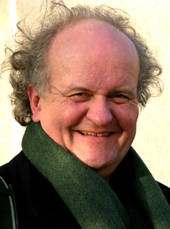

Wolfgang Rihm
Das Lesen der Schrift
Short instrumentation: 2 1 2 2 - 4 2 3 1 - timp, hp(2), org, str
Duration: 17'
Dedication: für Kent Nagano und das Deutsche Symphonie-Orchester (DSO), Berlin
Instrumentation details:
1st flute
2nd flute
oboe
1st clarinet in A
2nd clarinet in A
bassoon
contrabassoon
1st horn in F
2nd horn in F
3rd horn in F
4th horn in F
1st trumpet in C
2nd trumpet in C
1st trombone
2nd trombone
3rd trombone
contrabass tuba
timpani
1st harp
2nd harp
organ
violin I
violin II
viola
violoncello
contrabass
Rihm - Das Lesen der Schrift for orchestra
Printed/Digital
Translation, reprints and more

Wolfgang Rihm
Rihm: Das Lesen der SchriftOrchestration: für Orchester
Type: Studienpartitur (Sonderanfertigung)

Sample pages
Audio preview
Work introduction
Jörg Königsdorf interviews Wolfgang Rihm:
Doesn't the intercession of a contemporary composer have the effect of pushing Brahms' musical language into the distant, historical past?
No. It's as if there were four monochrome panels hanging in a Gothic chapel or, somewhat more colourfully, four large canvases by Anselm Kiefer. It was, in fact, Kiefer's Basle exhibition at the Fondation Beyeler that provided me with some very important ideas and inspiration for the work at hand. The original idea, however, goes back a long way: Das Lesen der Schrift refers to the process of decoding, gradually becoming aware of textual relationships encapsulated in symbols. It can also be a metaphor of decoding a musical text.
Out of the murmurings of doubt I began moulding pieces of silence, baking bits out of introversion and concealment, and came upon paths leading into the inaccessible – touching upon, if not actually depicting, the inner movement of a mourning process step by step. And in doing so, I altered its form. The four pieces add up to a self-standing composition, of course. They don't necessarily have to remain bound to this rather daring one-off attempt to respond to – and simultaneously question – the great Brahms Requiem from the inside.
Sequence of Movements:
Johannes Brahms (1833 – 1897)
„Ein deutsches Requiem“ op. 45 (1868)
I. „Selig sind, die da Leid tragen“
II. „Denn alles Fleisch, es ist wie Gras“
Wolfgang Rihm (* 1952)
„Reading of the Scripts“ Four Pieces for Orchestra (2001/2002)
I. Piece No 1 (very slow)
Johannes Brahms
„Ein deutsches Requiem“ op. 45
III. „Herr, lehre doch mich“
Wolfgang Rihm
„Reading of the Scripts“
II. Piece No 2 (very slow)
Johannes Brahms
„Ein deutsches Requiem“ op. 45
IV. „Wie lieblich sind deine Wohnungen“
V. „Ihr habt nun Traurigkeit“
Wolfgang Rihm
„Reading of the Scripts“
III. Piece No 3 (calmly)
Johannes Brahms
„Ein deutsches Requiem“ op. 45
VI. „Denn wir haben hier keine bleibende Statt“
Wolfgang Rihm
„Reading of the Scripts“
IV. Piece No 4 (very calmly)
(„Consolation“)
Johannes Brahms
„Ein deutsches Requiem“ op. 45
VII. „Selig sind die Toten“
